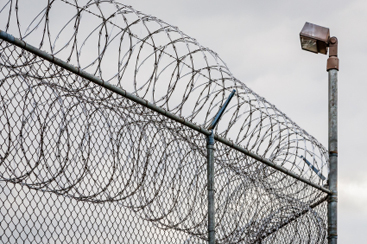|
|
| Responsible Prison and Criminal Justice Reform |
| By John Dewar Gleissner, Esq |
| Published: 07/07/2014 |
 People who study incarceration in the United States invariably reach the conclusion that something must be done. Mass incarceration today is out of control, way too expensive, counterproductive, a social disaster, a trend that is clearly weakening America. Our correctional population of 7.3 million Americans cycles in and out of prison, forms a pariah class, destroys families and simply does not cause crime to decrease enough to justify the financial and social costs. Both political wings blame the other wing: Liberals blame race and class discrimination, the War on Drugs, mandatory sentences and conservative "law and order" politicians. Conservatives blame government programs, moral relativism, a rejection of religion, the defining of deviancy downward and activist judges.
People who study incarceration in the United States invariably reach the conclusion that something must be done. Mass incarceration today is out of control, way too expensive, counterproductive, a social disaster, a trend that is clearly weakening America. Our correctional population of 7.3 million Americans cycles in and out of prison, forms a pariah class, destroys families and simply does not cause crime to decrease enough to justify the financial and social costs. Both political wings blame the other wing: Liberals blame race and class discrimination, the War on Drugs, mandatory sentences and conservative "law and order" politicians. Conservatives blame government programs, moral relativism, a rejection of religion, the defining of deviancy downward and activist judges.
Running American prison systems is an extremely difficult job. Any softening of prison life is unpopular with our punitive-minded electorate. The public demands that prison life be a worse lifestyle than the lowest free classes enjoy. Early release is politically unpalatable. Overcrowding makes everything worse. Correctional costs are a least-favored budget item. With aging trends, medical expenses in prison are on the rise. Solitary confinement, gang activities and Death Row all add expense. Federal courts through the years step in when conditions became horrendous. Critics of the current criminal justice situation are numerous. Practical solutions are in short supply, even though the punishment of criminals has been a function of every tribe, nation and civilization in history. The unequal treatment received by people of color in the criminal justice system is the most widespread criticism today. Critics fault race discrimination in the "age of colorblindness," from the policing and arresting phases to the extraordinary numbers and percentages of incarcerated people of color. Most of the books, articles and papers discussing disparate outcomes fault structural racism, income and educational disparities and punitive sentencing laws. Inequality arguments alone do not address the root practical problem. Perhaps unconsciously, inequality arguments minimize three aspects of the problem that cannot be ignored: First, they portray people of color as victims, without much discussion of personal responsibility for crimes committed. We rarely hear what punishment criminals should receive; we only hear about unfairness. And yet, every criminal justice system must punish. Second, they in effect minimize the more basic ineffectiveness of incarceration by urging that an ineffective system be run in a fairer manner. If by magic our criminal justice system achieved racial equality and justice overnight, it would still use a system of placing people in cages that does not work for rehabilitative or deterrence purposes, and which is now busting at the seams in fulfilling its incapacitative function. Recidivism caused by a failure of both deterrence and rehabilitation guarantees that the one way prison works - incapacitation of the criminal while the criminal is behind bars - will be excessively utilized at enormous expense. Third, by condemning "prison slavery" and the "prison-industrial complex," they reject hard work, a proven rehabilitative and productive process that can benefit everyone except foreign manufacturers. It's always easier to criticize than develop practical solutions. The problems of crime are difficult to solve. That's why societies developed capital punishment, because it rids society of the criminal. Today, it costs several million dollars to carry out one execution. Fines don't have much effect when criminals are poor - and most criminals are broke when caught. We cannot transport criminals to unsettled lands like the British and Russians did in earlier centuries. That leaves three practical, cost-effective punishments we have not tried in over a century. All three were proven effective earlier in history:
Editor's note: Corrections.com author John Dewar Gleissner, Esq. graduated from Auburn University (B.A. with Honor, 1973) and Vanderbilt University School of Law (1977), where he won the Editor's Award and participated in the Men's Penitentiary Project. In addition to practicing law in Alabama for the last 33 years, Mr. Gleissner isthe host of the Incarceration Reform Mega-Site blog http://incarcerationreform.blogspot.com/ and author of "Prison & Slavery - A Surprising Comparison", he is available for speaking engagements. Reprinted with permission - ezinearticles.com. Other articles by Gleissner: |
MARKETPLACE search vendors | advanced search

IN CASE YOU MISSED IT
|


Comments:
No comments have been posted for this article.
Login to let us know what you think